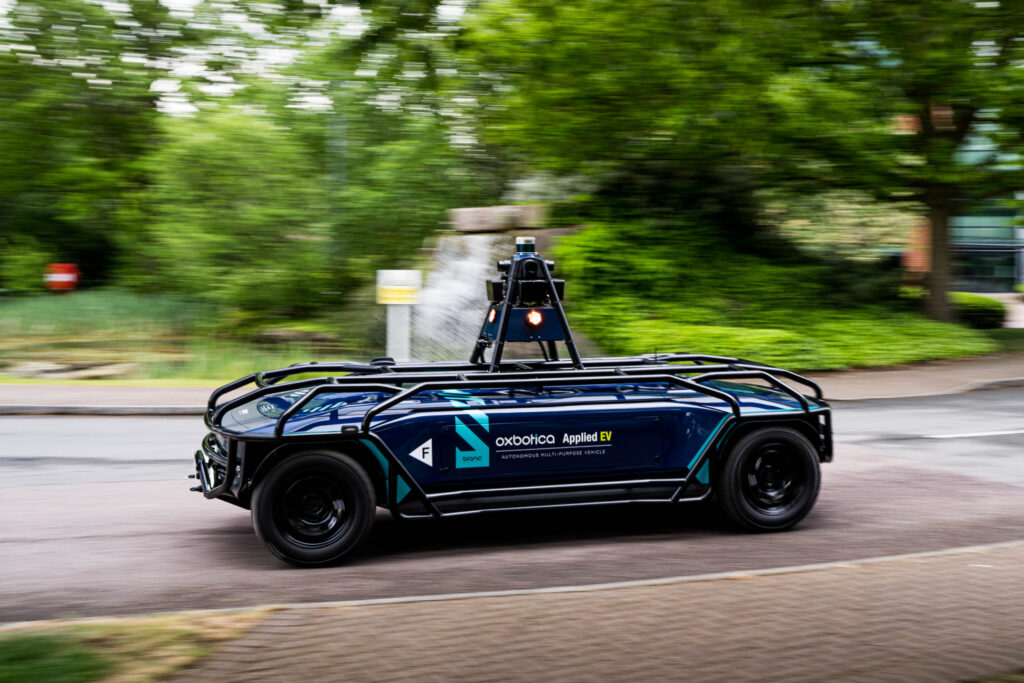Camilla Fowler, head of safety assurance, Oxbotica, shares her thoughts on the importance of collaborating on safety ahead of her ‘Preparing for safe commercial deployment of automated vehicles’ presentation at ADAS & Autonomous Vehicle Technology Expo Europe, June 13, 14 and 15, in Stuttgart, Germany.
 As head of safety assurance at UK-based autonomous vehicle software developer Oxbotica, Camilla is focused on preparing for the safe deployment and commercialization of automated vehicles. She previously led the risk management team at TRL for HelmUK, the UK’s first HGV platooning trial, and a number of CAV trials in the UK. Camilla also led safety assurance for the Smart Mobility Living Lab, setting the benchmark for safety across UK testbeds. She developed and evolved the safety case framework for CAV trials and is the technical author of PAS 1881, which sets out the requirements for an operational safety case and supporting safety management system.
As head of safety assurance at UK-based autonomous vehicle software developer Oxbotica, Camilla is focused on preparing for the safe deployment and commercialization of automated vehicles. She previously led the risk management team at TRL for HelmUK, the UK’s first HGV platooning trial, and a number of CAV trials in the UK. Camilla also led safety assurance for the Smart Mobility Living Lab, setting the benchmark for safety across UK testbeds. She developed and evolved the safety case framework for CAV trials and is the technical author of PAS 1881, which sets out the requirements for an operational safety case and supporting safety management system.
ADAS & Autonomous Vehicle International recently caught up with Camilla to hear her views on safety management systems and the current regulatory framework for automated driving.
What is your presentation about?
Oxbotica is advancing self-driving capabilities through the development and implementation of three key products: Oxbotica Driver, Oxbotica Cloud and Oxbotica MetaDriver. Safety is one of the key pillars of our work. This presentation will outline how we are preparing for the safe and successful commercial deployment of our products. I will also share insights into our safety management system and the processes of preparing for regulatory authorization and ensuring continued safety throughout operations.
What makes a successful safety management system?
It’s important that a safety management system isn’t a tick-box exercise or focused on the development of documentation. The purpose of the safety management system is to provide a framework that allows your business to effectively and efficiently manage safety, so it should be tailored to meet specific goals. Oxbotica’s focus is to ensure safety is owned by everyone and is embedded within the entire lifecycle of the product, and it is important that the safety management system enables this. Our safety management system is built around four pillars: safety policy and objectives, safety promotion, safety risk management and safety monitoring and improvement. Through the four pillars we ensure we have a robust framework and tools to support the development, implementation and maintenance of the safety case and allow us to learn lessons and feed these back into improving the safety and performance of our products.
Defining the ODD is fundamental to ensuring safety as it describes the specific operating parameters that the ADS is designed to safely and reliably operate within. It also enables specific test scenarios to be identified and defined to validate the system.
Is there a full and complete regulatory framework available today?
The simplest answer is no, not yet, but we are well on the way. Following the publication of recommendations from the Law Commission, in 2022 the Department for Transport published its Connected and automated mobility 2025 paper outlining how the government intends to enable CAV deployments in 2025 through a regulatory framework. It is proposed that self-driving vehicles will be required to have approval (systems type approval and whole vehicle approval) as well as authorization to operate on public roads. The proposal is to follow a ‘safety by design’ approach rather than setting numerical targets for safety, with the proposed requirement to ‘achieve an equivalent level of safety to that of a competent and careful human driver’. There will be a requirement to monitor the safety of self-driving vehicles while in use and make data available for any incident investigations.
The challenge is defining a careful and competent driver as this is largely subjective and numerical values are unlikely to be specified. Oxbotica has defined universal safeguards that allow the safety of Oxbotica Driver to be assessed against defined principles, enabling safety requirements to be identified with clear acceptance criteria. Risk acceptability varies between use cases and domains and will change over time. Monitoring allows these criteria to be evaluated and refined over time.
How is Oxbotica MetaDriver helping to speed commercial deployment?
We have defined domains that we operate in. Oxbotica MetaDriver uses generative AI to answer three core questions for any AV: ‘Do I see it right?’, ‘Am I doing it right?’ and ‘Can I trust myself right now?’
First it uses a small set of real-world scenarios to generate a vast bank (literally thousands) of virtual ones. It does this by endlessly changing the conditions encountered in the real world (weather, visibility, geometry, street furniture, actors, etc) and testing our software against them. Testing each ‘meta-mile’ in all weather conditions allows us to continually refine AV operations and behaviors. It also does away with the need to wait for those conditions to appear during real-world testing, which would prove considerably more expensive and time-consuming. In effect, the whole process hugely accelerates the crucial verification and validation stage. Oxbotica MetaDriver’s edge case discovery rates are actually an average of 1,000 times faster than those of traditional testing methods.
This kind of fast, targeted and diverse testing gives AV operators confidence that their vehicles are equipped to operate safely, accurately and effectively in their specialized environments. Data from every vehicle deployment, regardless of the specific environment, is continually being used to improve and upgrade our platform. The result is rapid, cost-effective development that enables us to reduce the need for expensive, time-consuming, ‘hard-mile’ testing without compromising safety or reliability.
What is the key message you would like to convey to conference attendees in Stuttgart?
Safety is a priority for Oxbotica but we are also passionate about ensuring the autonomy industry as a whole is safe. By sharing our learning and by collaborating on safety we can work together as an industry to improve road safety and ensure the projected benefits of automated mobility are realized.
Don’t miss Camilla’s presentation on Day 3, Thursday, June 15, at the ADAS & Autonomous Vehicle Technology Expo Europe conference (rates apply) – see the website for the full conference program and booking form.



